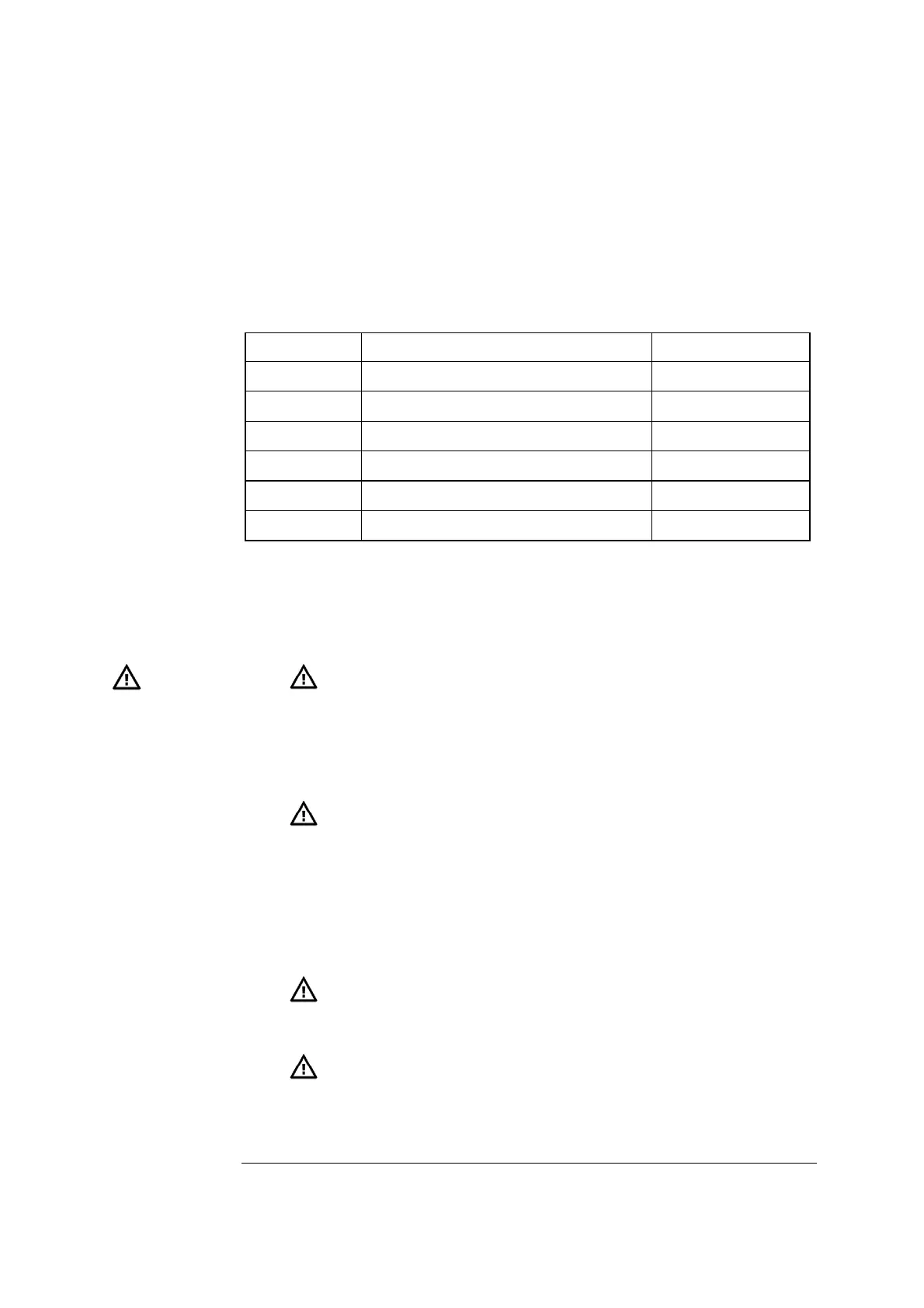4. Sample measurements ABL800 FLEX Operator's Manual
General information, Continued
FLEXMODE
This mode allows you to analyze a blood sample of 35 μL and higher – up to the
maximum volume accepted by your analyzer. Depending on the available sample
volume, the FLEXMODE provides the highest number of parameters: from all
available to as many as reliably possible.
The following parameters can be obtained depending on the available sample
volume (for the ABL835):
Volume Parameter profiles Message No. **
35-40 μL*
pH + OXI 869
40-55 μL*
pH + OXI 870
50-70 μL*
pH + OXI + BG 871, 872
65-100 μL*
pH + OXI + BG + MET 873
> 90 μL*
pH + OXI + BG + MET + EL 874
195 μL
pH + OXI + BG + MET + EL + ctBil No message
* All volumes are approximate volumes at ctHb = 15 g/dL.
** The messages will accompany the obtained result – see Patient result messages
at the end of this chapter. For interpretation of the messages – see Troubleshooting
messages in chapter 11 in this manual.
CAUTION
notices
1.
CAUTION – Presence of glucolic acid
Never use analyzer for lactate measurements if there is any
suspicion of presence of glycolic acid in blood as e.g. in case of
ethylene glycol poisoning or xylitol infusion. Glycolic acid
interferes with the lactate sensor resulting in erroneously high
lactate readings
2.
CAUTION – Risk of incorrect result
Visually inspect the measuring chambers for blockages when lifting
the inlet flap prior to performing a measurement. If there is a
blockage, close the flap and the analyzer will perform a rinse. If
repeated visual inspection shows blockages in the measuring
chamber, clean the electrodes and the measuring chamber according
to step 7 in chapter 11: Troubleshooting, section "Fluid transport
troubleshooting procedure" in this manual.
3.
CAUTION - Risk of incorrect result
Always remove air bubbles from a sample before introducing it into
the analyzer. Air bubbles may result in erroneous pO
2
values.
4.
CAUTION - Risk of incorrect result
During measurement, use the sample path view to observe the
sample in the measuring chambers. If any bubbles are seen,
disregard the result and repeat the measurement.
Continued on next page
4-6
